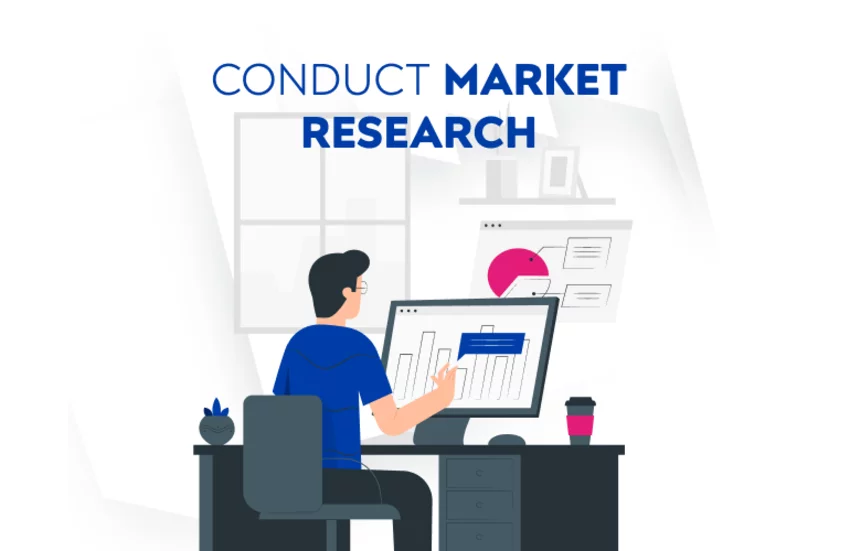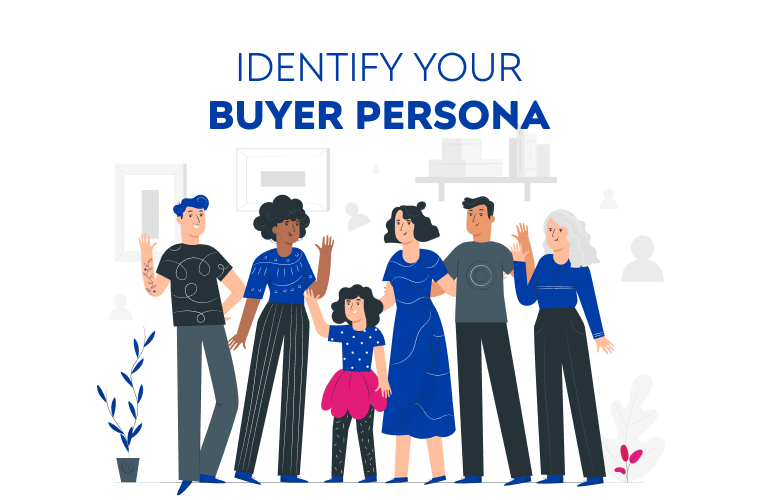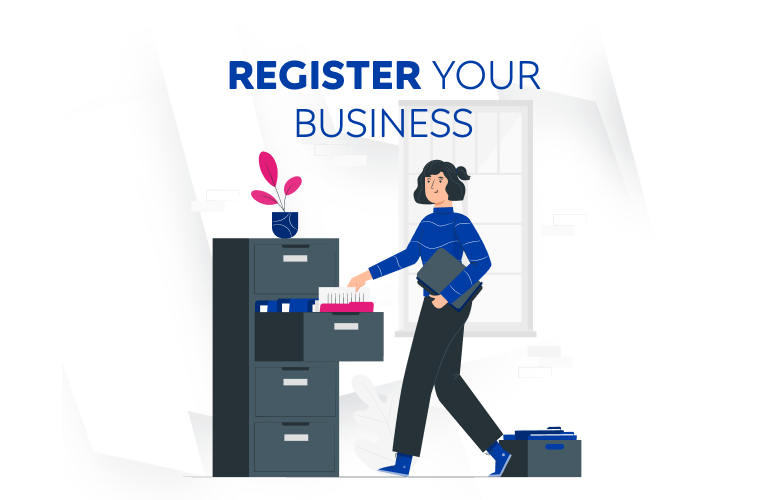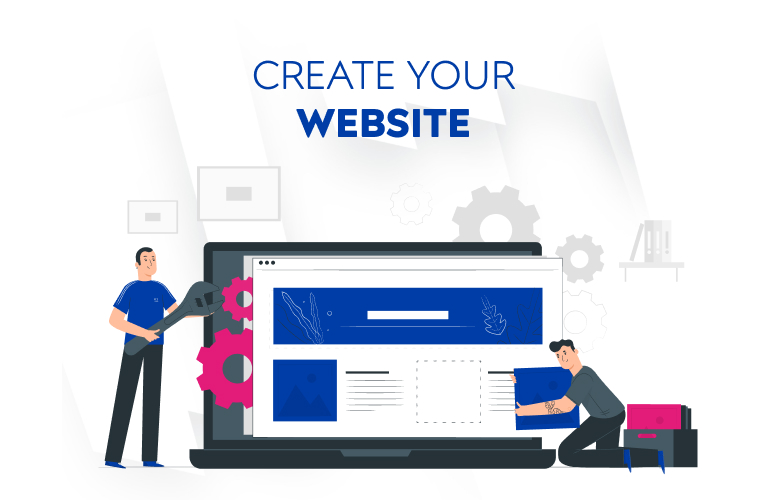How to start your digital commerce business (Step-by-step guide)
Digital commerce (or D-commerce) made a huge breakthrough in recent years. Digital commerce refers to the buying and selling of digital goods and services using digital channels.
In a nutshell, it’s eCommerce that deals with only digital goods and services. No tangible goods are sold by digital commerce businesses.
But this could make it even more simple for you!
In this article, we’ll show you how to jumpstart your digital commerce business, step by step. It’s hard to do everything on your own, so we’d like to help!
We’re a company with a focus on building successful eCommerce businesses! If you’re looking for help – you can count on us!
But let’s get back to the topic now! We’ll start with the first step of the process so sit back and soak up the knowledge.
Step 1: Conduct thorough market research
Before we dive into market research, it’s important to emphasize just how important market research is. It’s the foundation of your business.
If you’re trying to start selling without proper market research to back you up, you’ll quickly find yourself in trouble.
This is a huge step to make, so we’ll break it down into several sections. But before we do that, it’s important to know a few things in the beginning.
There are 2 types of research – primary and secondary.
Primary research refers to the data collection where you control the data and the method of data collection. The most important thing to know about primary research is that YOU collect data.
On the other hand, secondary research refers to collecting data from already existing sources of information. For example, you could find some already existing research on the internet and use it for your business.
To conduct research, you’ll have a wide range of tools to help you. For instance, you may use surveys, focus groups, publications, government reports, interviews, and so on.
Also, if you’re new to eCommerce in general, check out what are the benefits of eCommerce for both business and consumers.
And now when we’ve clarified this a bit, let’s start!


Analyze the industry
When you finish researching the targeted industry, you should have all the information needed to describe it in detail. You’ll know about the size of the industry, its growth rate, and the most recent trends.
<[book id='10885']>
There are a few reliable sources of information you’d want to check when researching an entire industry.
Sources such as Nielsen, MarketResearch.com, and Pew Research Center are just a few of the major research sources you’ll encounter in the near future.
For instance, if you want to sell an ebook on augmented reality, you may want to check as many industry articles as possible. Best place to start – Google search.
One example of a query that could bring you some results is “augmented reality trends”.
To get even more relevant results, you can use Google’s “tools” option and change the search timeframe to “past year”.
And just to make it clear – more specific query equals more specific data!
Find your customers
The moment you’ve finished researching the industry, it’s time for the next step.
Now, you’ll need to find your customers and understand why they’re doing what they’re doing. It sounds simple, but it can get tricky if you do it wrong.
Before you start, you’ll want to decide what kind of information are you going to obtain. For instance, you might want to find out where do the customers live (geographic factor), what kind of purchasing power do they have, or what’s motivating them to buy.

By being specific in your research, you’ll find the results you’re searching for much faster. Not to mention, you’ll get specific information that will help you create smarter marketing campaigns.
Primary research methods could work wonders here. For example, let’s say you’re still trying to find the audience for your ebook on augmented reality.
So, where do you even start?
Again, you could start with Google search. Search for Facebook groups, forums, or even Slack channels.
Create your own survey and use those channels to get in touch with your potential customers. You can create your survey using tools such as Google Forms or SurveyGizmo.
The more specific questions you ask, the more specific answers you get. This simple method could bring in hundreds of answers, helping you find out who exactly is your customer.
Another good method that will help you identify your customers is using consumer reports. It will be a great addition to your primary research.
The key to finding useful and relevant consumer reports is to be specific in your search. For example, if you’re searching for information on the usage of AR in households, your query may look like this – “AR users consumer insights 2020”.
Specific searches, such as this one, will get you some great and actionable results.
Consumer insights are usually built by analyzing hundreds or even thousands of potential customers, so it could be useful to take those results into account.
After gathering all the information on your potential customers, you’re already one step closer to crafting a personalized communication strategy.
Now, let’s move on to the final part of this step.
Research the competition
Today, there is no market without competition. And if there is one – you don’t want to be in it.
If there’s no competition, it could seem that you’re on a clear path to success and that no one’s going to stop you.
That thinking is wrong at its very core. Having no competition could mean 3 things:
- Your target market is too narrow
- You’re way ahead of the market
- You don’t have what people want
And if we’re still going to keep the example of a digital product, such as ebook on AR, there is some competition after all. And that’s a good sign.
So, there are some key questions you’ll want to answer as soon as possible:
- Who is the market leader?
- How many competitors are there in the market?
- What are your competitors’ biggest strengths?
- What are your competitors’ biggest weaknesses?
When you’ve answered these questions and you have a good grasp of your competitors, you’ll want to start executing your ideas.
All in all, market research is a key step in starting your digital commerce business, so don’t take it too lightly or you may find yourself in uncharted territory.
And now it’s time to head over to the next step.
Step 2: Register your digital commerce business
This may seem like an obvious step to make, but it’s important enough for you to put a significant amount of effort into registering your business.
If you’re aiming for success in digital commerce, you’ll want to create a brand that goes along with your persona.
For instance, if you’re selling AI software, you may want to avoid colors and imagery associated with nature. The reason for that is because it doesn’t connect with your buyer persona.
But still, before you can build a brand you’ll need to go through some legal matters.

Register the business
First, you need to choose a business name and register the company you’re starting. We recommend you do not skip this step, as you’ll enjoy some legal protection and tax benefits for doing it!
After you’ve registered your digital commerce business, it’s time to choose a name for your brand!
Your brand name doesn’t need to be identical to the legal name of your digital commerce business, but some consistency may help. Nevertheless, the brand name you’re choosing should fit the niche, but it’s not mandatory.
Next, in order for your digital commerce business to operate properly, you’ll need to secure business licenses and permits. To do this, check with your city, your county, and state to see what sorts of licenses you need.
But before you try obtaining your business licenses, you need to open a business bank account.
And now – you’re your own very first employee! Congrats!
After you’ve finished the legal matters of opening a business, it’s time to create a brand.
Your logo is often the first thing a customer sees when they open a website. Now is the time to create a logo that will represent your digital commerce business and pour trust in your customers.
You could already establish the visual identity of your brand, such as the colors of the brand, fonts, or typeface.
If you’d like some professional help, we can help you with that! Feel free to reach out to us and ask for some help, we’ll gladly do it!
Step 3: Create a business plan
You probably already have a picture of what your digital commerce business is going to look like.
We’ve gone through market research, establishing brand identity, and registering the business – and now is the time to get strategic.
Creating a business plan may not be easy, but no success happened overnight. To help you out here, we’ll guide you through the process of creating a business plan.
Just to state at the beginning of this chapter, when you have completed your business plan, you’ll have the following:
- More sense of knowledge into business aspects
- Resources you’re going to need to launch your business
- Road map telling you how to set your goals
- Viability
There are some main parts of a business plan and we’ll go step by step here.

Executive summary
The executive summary is written according to the goals you’re setting and it should be done at the very end. This ensures that you have included all the important information and factors about your business and that you’re presenting your business in a concise way.
Some information found in the executive summary shows your research, your concrete forecasts regarding sales, and some main information about the brand.
Business Model
When you’re figuring out your business model, you have to consider 3 different areas:
- Monetization strategy
- Target market
- Sales channel
Monetization Strategy
The monetization strategy delves into the methods you are going to use to sell your products.
This strategy will look at different product monetization methods including white label, private label, affiliate marketing, wholesale, dropshipping, and even selling ads.
Target Market
In the target market section you will write a sentence or so on who your target market is in the community.
Sales Channel
The sales channel refers to where you’re going to sell your products.
For example, you might be selling your products via social media channels and that should be written down.
Business overview
This section covers a major part of your business plan. It will cover the following aspects:
- Brand name
- Company type
- Domain name
- Value proposition
- Mission
- Vision
- Brand traits
Let’s go now through each and every aspect of a business overview.
Brand name
The brand name section lists your business name or brand name.
This is an extremely important aspect of your business plan as it’s what will set the tone for everything that follows.
Pick a brand name that’s simple and unique and it would be great if it can be used in some kind of a wordplay manner.
Company type
The type of company refers to how your business operates. It might be an LLC, S-corporation or even sole proprietorship.
To determine what type of company you should register, the best solution would be to first speak to your accountant. There are many legal aspects in forming a certain type of company.
Domain name
A domain name that you choose should be memorable and embrace the traits of your digital commerce business.
Also, when choosing a domain name, be sure to think about it from a SEO perspective here.
Value proposition
A value proposition is a statement that clearly says what your business idea is.
You should write this section as if you had only 2 minutes to explain how your business operates to a potential investor or a customer.
It will serve you as a company description for your digital commerce business.
When writing it down, think about sensory words and how they affect the readers.
Mission statement
A mission statement stands for why you do what you do.
Why did you start the business? Why are you selling the products you’re selling?
These are some questions that can serve you great for writing down a mission statement. Just make sure you clearly explain what’s the mission of the business.
Vision statement
The vision statement refers to how you’re going to do something. It’s a “dream” you have for the success of your business and the way you’re going to achieve it.
When you’re writing down the vision statement, think long-term. Think about what you’re hoping to achieve in the long run, which can be maybe 5, 10, or even 20 years.
This will help you greatly in constructing the rest of your business plan.
Brand traits
This is a short section of your business plan. In general, it’s composed of a few words that describe your brand.
Consider using a few but powerful words when describing your brand.
Personnel
This section lists all of the employees in your organization or any team members that are going to be involved in day-to-day activities.
There are many different skills you’re going to need to create a successful business, but here are some concrete managerial roles you’ll want to think about:
- CEO (In many cases, you as a business owner)
- Customer service manager
- Copywriter
- Social media manager
- SEO manager
- Media buying (advertising) manager
But to move on, we’re heading to another main section of your business plan – the market analysis.
Competitive market analysis
In step 1, we wrote more about market analysis.
As we earlier said, there are many ways to find out who your target market is, who your competitors are, and how to conduct this research.
In this part of your business plan, you’ll need to do it thoroughly. The competitive market analysis will be the foundation of your marketing strategy. If you’re looking for more resources on eCommerce and digital commerce analytics, check out the article we made on this topic!

As we’ve covered this section in the first step of this guide, we’ll move on to the next section of your business plan – your digital products.
Digital products and offers
This section is extremely specific, as we’re talking about digital products here.
If you’ll remember from the start, we said that digital commerce differs from traditional eCommerce. It’s focused solely on digital products and services.
So, in that light, let’s see what information do you need to have in this section.
Different types of products
There are different types of digital products, each for a different target audience.
So, let’s see what kind of digital products you could sell.
- Convenience products – they are meant for frequent purchases, there’s little effort in buying and the price is usually a bit lower
- Shopping products – they are bought somewhat less frequently, there’s a bit more effort in the buying process
- Specialty products – these are the ones you could focus on. If you’re selling specialized digital products or services, it may do a great job in furthering the brand and customer loyalty.
Existing products
If you already have an array of products you’re going to sell, you’ll want to write down more detailed specifications for each product.
Every digital product is specifically designed, so there might be many different product specifications and tags, but it’s a necessary part of composing your business plan.
Future products
Do you have any other products in the pipeline? For instance, if you’ve already sold a few ebooks and the customers are satisfied, could you sell them something else?
To keep your business up and running for a long time, there are some product offerings you’ll want to think about:
- Core product
- Cross-selling
- Upselling
- Tripwire
Each product group has its own specific purpose. For instance, a tripwire is a product you’re using to attract customers to your digital commerce store, while the core product is your main focus.
You need to know what products you should have in each product group in order to successfully sell your core product.
Also, calculating true product costs is essential. When it comes to digital products, they have a certain advantage when compared to traditional products.
They don’t need to be stored in a warehouse, they are produced digitally and they are easily distributed. So, that takes off the costs of a digital product.
Nevertheless, you’ll need to write down the costs for some specific areas:
- Target price
- Cost of producing a product
- Total costs per product
- Net profit per product
- Profit margin per product
Once you’ve finished with this section, it’s time to move on to the next step, and one of the most important one – marketing.
Marketing plan
Now that you’ve successfully identified what’s the target market and how you’re going to sell your products – it’s time to plan your marketing activities.
To know how to drive traffic to your website and to acquire new customers takes a certain amount of budget and time, so it needs to be carefully planned.
If you launch a website and don’t plan your marketing activities, there’s a little chance your idea is going to be successful.

To plan the marketing strategy successfully, you’ll need to know a few things about your customers first:
- How old are your customers?
- Where do they live?
- How many customers are in your customer base?
- What’s their level of education?
- How much are they earning?
- What are their pain points?
These are some important you’ll need to answer before you go any further.
Marketing channels
There are so many channels available today, but the real challenge is choosing which channels suit your digital commerce business the best.
Let’s list a few possibilities here so you get some inspiration for your next strategy.
Paid marketing channels
There are many paid marketing channels and we’re going to list some of the most used:
- Google Ads (Pay Per Click) – you could advertise your digital products via Google Ads, meaning you can advertise your products on YouTube, Google Shopping, Google Search results and so on.
- Affiliate advertising – This refers to partnering with other websites and blogs. They are going to sell your product for a small fee, while you’re getting more exposure. It’s a win-win strategy most of the time.
- Facebook Ads – This refers to Facebook’s advertising platform. It’s one of the most used paid marketing channels, so give it a thought. It allows you to reach every single Facebook user, so it may serve you great.
- Influencer marketing – This refers to paying influencers to spread awareness about your digital products on their social networks. It’s a popular strategy nowadays, but you’ll need to pay attention to which influencers you’re cooperating with.
Organic marketing channels
Organic marketing channels refer to the non-paid channels which usually require a certain amount of effort and time, but may bring extraordinary results. Let’s list a few options:
- Social media channels (Facebook, LinkedIn, Twitter,…) – This refers to managing your social media profiles.
- Search engine optimization (SEO) – SEO is a great way to reach new customers organically. The goal is to create content that is optimized for the search engine, so the search engine will show your content to a larger (and targeted) audience. Also, consider optimizing your website for voice search, as it’s one of the newest trends in the world of SEO.
- Content marketing – This is closely related to social media management and SEO. The main purpose of content marketing is to create content that’s going to attract new customers and improve relationships with current customers.
There are more ways of organically reaching new audiences, but you’ll have to find the best mix for your product specifically. The mix depends on your customers, as well as the product you’re selling.

How much does it cost to acquire new customers?
This is an extremely important part of a business plan. To understand how much does it cost to acquire new customer, you’ll need to calculate the lifetime value of a customer (LTV).
LTV is a formula that helps you understand how much does an average customer spend over a certain period of time.
When you’re starting out, you don’t have a lot of customer data. It’s a good idea to go with some conservative assumptions when starting anew.
However, when discussing digital products, this may not fully apply. Production costs of digital products are very different than the production costs of traditional and tangible products.
So, you’ll need to calculate the costs of production for each product and calculate the profit per product.
By doing it, you’ll know more about how much you can earn per average customer.
Selling digital products often leaves you with higher profit margins, meaning you may have a somewhat larger marketing budget.
It’s crucial to understand that your marketing costs should also be taken into account when calculating the profit per product or profit per customer.
When you’ve taken your marketing costs and production costs into account and calculated the LTV, it’s time to move on to the next section.
Choose the right technology for your digital commerce business
Right now, there are tons of different technologies and options available. It’s important to understand the technologies you’re going to use and how they connect with each other.
Some technologies you might use are:
- Shopping cart platforms
- Hosting
- Payment providers
- Accounting applications
- Marketing automation software
- Marketing tools
- Loyalty programs
- Etc.
You should write down a detailed list of all the products and services you’re going to use while running your digital commerce business.
Your business model and the technologies you’re using should be aligned. Not every technology will work for your business and you should definitely keep that in mind.
Also, keep in mind that on average, it takes 7 interactions between the customer and your brand to make a successful sale. Think about how you can use certain technologies to keep interacting with your customers.
While you’re figuring out which technologies to use in your digital commerce business, think about the following questions:
- How are you responding to questions from your customers?
- How do you connect with customers on social media?
- What kind of information are you sending through your emails?
- How are you advertising?
- In what way are you establishing brand loyalty?
- How are the current customers reviewing your business?
- What is the public saying about your brand?
After you figure out what kind of technologies will you be using in your business, it’s time to come up with a budget.
And now we’re coming to the final, and probably the most important section of a business plan – the finances.
Financial plan
When drawing up your financial plan, it’s important to evaluate all of your operating expenses.
The focus of this section is to determine how long will it take for your business to be profitable. Initial traffic and conversion rates will help you to come up with a detailed financial plan.
This section will be used to forecast future sales, expenses, and net profits of your digital commerce business.
You’ll want to include the following in your financial plan:
- Projected revenue – To come up with the projected revenue, you’ll need to first come up with the projected number of sold products. Then, you can calculate the projected revenue successfully.
Projected revenue = Number of products sold / Average product price
- Fixed expenses – This refers to the expenses that are constant. They are present no matter how much products did you sell. This usually includes software subscriptions, salaries, rent, and utilities.
- Variable expenses – This refers to the expenses that change proportionally to the volume of your sales. With digital products in mind, these expenses may be a bit lower, as the production costs are usually lower, but marketing activities may be costly.
This part of the business plan will help you better understand what does it take to make your digital commerce business profitable and how you’re going to do it.
The whole financial plan should give you answers to some of the following questions:
- How much do you need to sell on a yearly basis to meet your goals?
- What is the product margin?
- What is the LTV?
- How much does it take to acquire new customers?
- Do you have any huge expenses that would require investors?
The financial plan is built on a yearly basis and it helps you map out all of your expenses.
There are many different earning models you can go through to determine how much you’re going to profit with your digital commerce business.
To find out how much you’re going to profit, there are a few formulas you could use to calculate it, such as the profit equation or break-even analysis.
And with this, we’ll conclude this chapter of our guide. It’s a detailed one and it shouldn’t be taken lightly. Crafting your business plan will take some time, but it will ensure that you have everything you need to create a profitable digital commerce business.
Step 4: Create a website
Once you’ve registered your business and crafted a business plan, it’s time to take action.
You’ll need to seriously consider which platform you’re going to use to sell your digital products. Aspects such as loading speed, features, payment gateways, and SEO-friendliness are just some of the aspects you should consider when choosing your digital commerce platform. We crafted an in-depth article on eCommerce website features you may get in touch with, so use it as an additional resource before you start your business.

We’ve been working with digital commerce businesses for a quite long time, and we’ve identified Pimcore as the best platform for digital commerce.
It’s an extraordinary platform offering 6 different modules, ranging from marketing modules, data management modules to experience management modules.
To find out more about Pimcore, check out our Pimcore knowledge base. It’ll give you a great insight into the platform and how it operates.
Also, if you’re looking for some help in starting your digital commerce business, you don’t need to look further. We have everything we need for your business to succeed. All we need is your main idea.
If you’d like to know more about how we’re using Pimcore for digital commerce, check out one of our previous articles. You’ll find everything you need to know about creating successful digital commerce businesses through this platform.
Not to mention, there are now countless platforms available. To save you some time, we’ve compared some of the most popular platforms and come up with some concrete reviews of each one of them.
Check out how does WordPress compare with its alternatives and which platform is going to suit your business the best way possible.
Also, we’ve compared Pimcore vs. WordPress in one of our latest articles, so dive in and learn all the differences!
Let’s move on to the final chapter of this guide – the start.
Step 5: Start your business
This is the last step you’ll need to take.
If you’ve gone through all of the steps previously mentioned, it’s time to start. If you’re seeking more knowledge on eCommerce and digital commerce, check out the list of 10 eCommerce blogs you should follow. P.S. Our blog has some great resources too!
Of course, dealing with all of this may be overwhelming for a one-man team, so consider finding a helping hand.
If you’re ready, we’d like to help you out with creating your next successful digital commerce business.
We’ve got the knowledge and the skills, you’ve got the business idea. Let’s team up and get it right from the start. We’re professionals in building integrated eCommerce businesses and we’re ready to put our skills to use whenever you’re ready.






